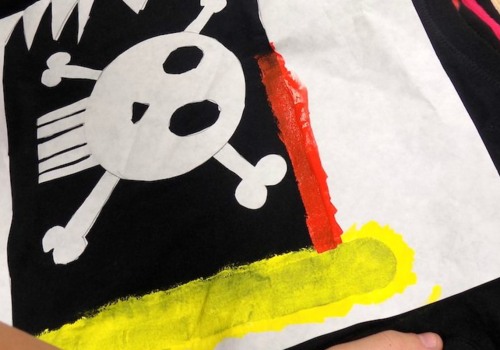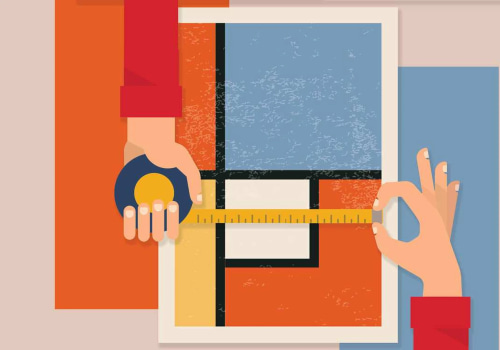When it comes to large format printing, size and quantity of prints can have a significant effect on the cost. Whether you're looking for a single poster for an event or a large run of promotional material, understanding the different factors that affect the cost of large format printing can help you make the best decisions for your project. In this article, we'll explore what goes into determining the cost of large format printing, including the size and quantity of prints. When it comes to large format printing, size and quantity of prints are two of the most important factors to consider when determining the cost of a project. Factors such as the type of material used, the size of the print, and the quantity of prints ordered can all affect the overall cost of a project.
Knowing what factors to consider when choosing the right size and quantity of prints can help ensure that you get the results you desire while saving money at the same time.
Factors That Affect Cost:
The type of material used for a large format print is one factor that affects cost. Materials such as vinyl, canvas, fabric, paper, and plastic can all vary in price. Additionally, the larger the size of a print, the more expensive it will be. The number of copies ordered also affects cost.Generally, ordering multiple copies of a single print can result in lower costs per copy.
How to Choose the Right Size and Quantity for Your Project:
When deciding on the size and quantity of prints for your project, it’s important to keep your project's needs in mind. Consider factors such as the purpose of the prints (will they be used for advertising, decoration, etc.) and the intended audience (are they intended for indoor or outdoor use). It’s also important to consider the available space for displaying or storing the prints. By taking these factors into account, you can ensure that you choose the right size and quantity for your project.Types of Large Format Prints:
There are many different types of large format prints, each with their own advantages and disadvantages.Common types include canvas prints, fabric prints, paper prints, vinyl prints, posters, and banners. Each type of print has its own unique properties that make it suitable for specific projects. For example, canvas prints are often used for wall art and decorations while vinyl prints are great for outdoor advertising.
Common Uses for Large Format Prints:
Large format prints can be used for a variety of purposes. They are often used for advertising and promotional purposes, such as billboards and banners.They are also used for decoration and wall art in homes and offices. Additionally, large format prints are often used for signs and posters.
Tips for Choosing the Right Size and Quantity of Prints:
When choosing the right size and quantity of prints for your project, it’s important to keep several factors in mind. First, consider your project's purpose and intended audience. Secondly, consider the available space for displaying or storing the prints.Finally, compare different types of materials to determine which is most suitable for your project. By following these tips, you can ensure that you choose the right size and quantity of prints for your project.
Types of Large Format Prints
Large format printing covers a wide range of products, from banners and signs, to posters and decals. Each type of print has different uses, strengths, and weaknesses. Banners are ideal for large, eye-catching displays.They are printed on a flexible material, such as polyester or vinyl, and can be hung from ceilings or walls. Banners are resistant to weather, making them a great choice for outdoor displays. Signs are printed on rigid materials, such as aluminum or PVC board. They are often used for commercial purposes, such as providing directions or advertising a business.
Signs come in a variety of shapes and sizes and can be used both indoors and outdoors. Posters are usually printed on paper or cardstock and feature bright colors and detailed images. They are great for advertising events or displaying promotional messages. Posters can be hung indoors or outdoors.
Decals are printed on vinyl and can be used to decorate walls and other surfaces. They can be used to create eye-catching visuals with minimal effort. Decals come in a variety of shapes and sizes and can easily be removed without damaging the surface.
How to Choose the Right Size and Quantity for Your Project
When it comes to large format printing projects, there are a few key considerations to make when determining the size and quantity of prints you’ll need. Firstly, you’ll need to take into account your budget, as this will help you determine the size and quantity of prints you can afford.Additionally, you’ll want to consider what outcome you’re trying to achieve with your prints; this will determine the size and quantity of prints you’ll need to get the desired results. Lastly, you’ll also need to consider the usage of your prints; if they’re for a temporary event or promotion, you may only need a few prints, but if they’re for a more permanent display, you may need more prints. Once you’ve taken into account all of these factors, you should have a better idea of how many prints you need and what size they should be. You can then compare different printing services to find the best deal for your needs. Remember, when it comes to large format printing projects, choosing the right size and quantity of prints is essential for ensuring the success of your project.
Factors That Affect Cost
When it comes to large format printing, there are several factors that can affect the cost of your project.The number of prints you need, the type of printing material, and the complexity of the design all play a role in determining the cost.
Number of prints
The number of prints you need is one of the biggest factors that affects the cost of your project. Generally, the more prints you need, the higher the cost. If you're able to reduce the number of prints needed, you may be able to save money on your project.Type of printing materialThe type of printing material you choose is also a factor in how much your project will cost. Different materials have different costs associated with them, so choosing the right material for your project can help to keep costs down.
Complexity of design
The complexity of your design can also affect the cost of your project. If you have a complex design with intricate details, it may require more time and effort to produce, which could lead to higher costs.However, simpler designs may be easier and less expensive to produce.
Common Uses for Large Format Prints
Large format prints are commonly used for a variety of purposes, including advertising campaigns, trade shows, special events, and displays. These prints are often used to create a memorable and lasting impression and can help to increase brand recognition, generate more sales, and attract more customers. Advertising campaigns often require large format prints in order to make an impact on potential customers. The larger size allows for more detailed images and messages, which can be displayed in a variety of locations such as billboards, bus shelters, and train stations. Trade shows often require large format prints to stand out from other vendors, attract more customers, and make a lasting impression. Special events such as weddings or anniversaries can also benefit from large format prints.Large banners or posters can be displayed at the event to help create an atmosphere of celebration and display important information to guests. Displays are another popular use for large format prints. These can be used to display products, services, or artwork in a larger format that is sure to capture the attention of potential customers. No matter what the purpose of your large format print is, it's important to consider the size and quantity of prints needed for your project. Factors such as the size of the image, the material used for printing, and the amount of detail required all affect the cost of your project.
Choosing the right size and quantity for your project can save you money and ensure you get the results you desire.
Tips for Choosing the Right Size and Quantity of Prints
Choosing the right size and quantity of prints for a large format printing project can be a daunting task. However, there are a few key tips to help you make the right choice and get the results you desire. To ensure you get the best quality prints, accurate measurements, and cost-effectiveness, consider the following tips when selecting size and quantity of prints.Measure Accurately
: Before committing to a large order, it is important to measure accurately. Take into account any potential issues with the material or printer that may affect the finished product.Also, consider how many prints you need for your project. It is important to have an accurate estimate of how much material will be needed to complete the job.
Consider Usage and Budget
: Consider how the prints will be used and what your budget is for the project. If you are printing posters or banners, you may need more prints than if you are printing postcards or flyers. This will affect the size and quantity of prints you need to order.Test Before Committing to a Large Order
: If you are unsure about whether a particular size or quantity of prints will work for your project, it is best to test it before committing to a large order.You can print a small sample of prints before committing to a larger quantity.
Check Quality
: Check the quality of the prints before ordering. Make sure they are crisp, clear, and free from any imperfections. Additionally, check that the colors are true-to-life and vibrant.Choose a Reputable Printer
: Make sure to select a reputable printer that has experience in large format printing. Doing research ahead of time can ensure you get the best quality prints at the best price. Size and quantity of prints are important factors to consider when deciding on a large format printing project.By understanding the factors that affect cost and how to choose the right size and quantity for your project, you can save money and make sure your project is successful. In this article, we discussed the types of large format prints, common uses for them, and tips for choosing the right size and quantity of prints. By following these tips, you can make sure you get the best results for your project.











Leave Message